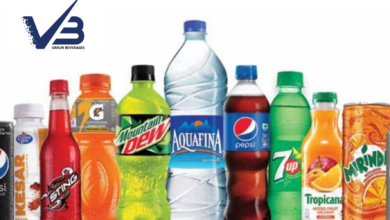
Logistics is indeed a rapidly developing sector. As organizations expand, the requirement for shipping, sales, storage, delivery, plus warehousing increases proportionately. Compared with an IBEF analysis, India’s logistics business is currently worth $ 215 billion and is quickly rising. Meteorologists expect that logistics will grow at a breakneck pace in the upcoming weeks as demands for the availability of internet commerce increase. Even with the advancement of technologies, some logistics organizations can still draw a clear boundary between profitable and loss-free operations.
The approaches that set dominant organizations apart are developed via extensive study and planning and with the assistance of industry specialists.
If you want to develop a brand for your firm on a global and regional level, consider the following strategies for increasing sales in the logistics sector.
Step 1: A well-thought-out strategy for projecting revenues: How can you enhance your logistics company’s business? Additionally, your selling process should be SMART. This implies the following:
• Specific targets that may be monitored for each sale and cultivated and changed lead.
• Quantifiable objectives represented numerically in terms of time spent, pricing, revenue, line of products, and revenue generated.
• Possible to achieve sales that are backed up through lead-generating resources, procedures, and systems.
• Set realistic objectives that make a naturalistic worldview and strive for something like the top, but develop a plan for achieving them.
• One-time objectives that may be recorded using a timesheet, where every other weekly goal adds to monthly goals, ultimately resulting in yearly goals.
Step 2: The honed process of lead generating Logistics activity is fueled by leads. According to SBA surveys, 627,000 firms are formed each year. Thus, the next step in increasing sales in the logistics business is to constantly scan the digital environment for new prospective clients and transform them into prospects through a seamless procedure. we might use the following method:
• Generate Leads This is where external and internal marketing techniques are implemented. You’ll have to compile a detailed list of everyone you want to do business with and begin pursuing them directly and indirectly through various tactics.
• Filtration of lead After gathering valid lead data in the first stage, comparing it to the consumer persona to determine whether leads are qualified for consumer transformation.
• Evaluation of the funnel This phase entails determining which phase of the item’s funnels. The funnel is divided into four stages: awareness, consideration, conversion, and loyalty.
• Proposition Throughout this phase, your purpose is to persuade the customer, acquire a proposal that meets his requirements, and handle any required discussions.
• Deal Closing Once the consumer is satisfied with your offer, the company must give the service and collaborate with them to ensure outstanding service.
Develop a long-term connection as the third step. You may join the logistics industry as little more than a high-end service provider by maintaining consumer satisfaction and developing loyalty ties. To retain clients, it will be required to establish more market credibility by adhering to socially responsible and transparent business practices. How can client loyalty be used to enhance sales inside the logistics sector?
• Ensure that every commodity in your storage unit is completed on time and that any delays have a clear justification.
• Consciously manage inventories and give consumers exclusive discounts and after-sales care to provide an unmatched customer experience.
Step 4: Concentrate on Website Editing Your ideal consumer spends an average of 145 minutes more than upon that Internet in the current day. With this amount in mind, you have a good potential of increasing revenue through a website, provided you also like the web search algorithm.
SEO (Search Engine Optimization) is a technique corporations use to create revenue by attracting consumers to their website through search. For instance, if you have a blog titled “3 Steps to Choosing a Logistics Partner,” the likelihood is that your blog will appear when a consumer searches “Steps to Find a Logistics Partner.” As a result, this should result in a research-driven sale.
Therefore, emphasize images, editing, and a glorified yet genuine picture of your logistics firm to increase sales.
Step 5: Analyze Competitive Productivity What distinguishes your rivals’ logistics businesses? Responding to this question will assist you in identifying problems in your plan. This study will enable you to design a unique yet far more intriguing offer than your rivals. After placing your competitors, keep an eye out for their offerings, marketing strategies, customer reviews, and comparable services.
Then do a Situational analysis on the current sales approach to ascertain your strengths and weaknesses. Here are some things to ask yourself to do successful competitive research:
• What logistics department did your need to have the most excellent assistance from?
• How do they handle service to customers?
• How do your rivals connect with their customers?
• How do they provide value to their consumers’ lives? Additionally, it would help if you considered the local and worldwide placement of other logistical operations to ascertain the following:
• How then do companies maintain a steady level of sales?
• What is your business plan for establishing relationships with the world’s most recognizable brands or customers?
Step 6: Identify your unique selling proposition Any brand’s distinctive value proposition is its primary source of appeal. When you provide more than competing businesses, customers are more likely to be doing business with the company. For instance, you might offer exceptional deals to new and current clients during festivals to entice them to continue using your service.
While many logistics firms provide similar services, it is critical to recognize that you must differentiate yourself to fulfill your customers’ expectations in a crowded industry. To determine the efficiency of your proposal, you must analyze website analytics and sales data through a third-party accountability expert.
Step 7: Incorporate visuals Numerous tools for creating films and visual offerings for your connections and consumers. Additionally, it is a kind of marketing in which you give the consumer the sense that they are a component of the method and assist them in deciding on your organization.
How to improve sales inside the logistics sector by using powerful graphics that communicate what your customers like about your organization.
Conclusion
These ideas for increasing sales inside the logistics business can help you maximize your efforts while minimizing stress and giving you a competitive advantage.
It’s simple to produce revenue in the logistics sector if you follow a strategic plan with short-term and long objectives. There are several exciting options in the logistics sector, and each of these strategies will assist you in realizing your business’s full potential. If you employ paid and organic media well, you can generate sales. Additionally, pay attention to your suppliers and stay current on emerging technology in your sector.
Article Proofread and Edited by Shreedatri Banerjee




